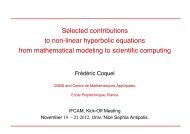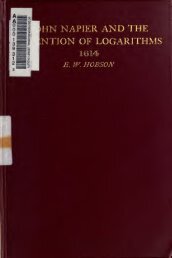The construction of the wonderful canon of logarithms
The construction of the wonderful canon of logarithms
The construction of the wonderful canon of logarithms
Create successful ePaper yourself
Turn your PDF publications into a flip-book with our unique Google optimized e-Paper software.
12 Construction <strong>of</strong> <strong>the</strong> Canon.<br />
easily which arise by subtraction <strong>of</strong> an easy part <strong>of</strong> <strong>the</strong><br />
number from <strong>the</strong> whole number.<br />
14. We call easy parts <strong>of</strong> a number, any parts <strong>the</strong> denominators<br />
<strong>of</strong> which are made up <strong>of</strong> unity and a number <strong>of</strong><br />
cyphers, such parts being obtained by rejecting as many <strong>of</strong><br />
<strong>the</strong> figures at <strong>the</strong> end <strong>of</strong> <strong>the</strong> principal number as <strong>the</strong>re are<br />
cyphers in <strong>the</strong> denominator.<br />
Thus <strong>the</strong> tenth, hundredth, thousandth, loooo*,<br />
1 00000* 1 000000* 1 0000000* parts are easily<br />
obtained, because <strong>the</strong> tenth part <strong>of</strong> any number is<br />
got by deleting its last figure, <strong>the</strong> hundredth its<br />
last two, <strong>the</strong> thousandth its last three figures, and<br />
so with <strong>the</strong> o<strong>the</strong>rs, by always deleting as many <strong>of</strong><br />
<strong>the</strong> figures at <strong>the</strong> end as <strong>the</strong>re are cyphers in <strong>the</strong><br />
denominator <strong>of</strong> <strong>the</strong> part. Thus <strong>the</strong> tenth part <strong>of</strong><br />
99321 is 9932, its hundredth part is 993, its thousandth<br />
99, &c.<br />
15. Tlie half twentieth, two hundredth, and o<strong>the</strong>r parts<br />
denoted by <strong>the</strong> number two and cyphers, are also tolerably<br />
easily obtained ; by rejecting as many <strong>of</strong> <strong>the</strong> figures at <strong>the</strong><br />
end <strong>of</strong> <strong>the</strong> principal number as <strong>the</strong>re are cyphers in <strong>the</strong><br />
denominator, and dividing <strong>the</strong> remainder by two.<br />
Thus <strong>the</strong> 2000* part <strong>of</strong> <strong>the</strong> number 9973218045<br />
is 4986609, <strong>the</strong> 20000* part is 498660.<br />
16. Hence itfollows that iffrom radius with seven cyphers<br />
added you subtract its 1 0000000* part, and from <strong>the</strong><br />
number <strong>the</strong>nce arising its 1 0000000* part, and so on, a<br />
hundred numbers may very easily be continued geometrically<br />
in <strong>the</strong> proportion subsisting between radius and <strong>the</strong><br />
sine less than it by unity, namely between 1 0000000 and<br />
9999999 and this series <strong>of</strong> proportionals we name <strong>the</strong><br />
;<br />
First table.<br />
Thus


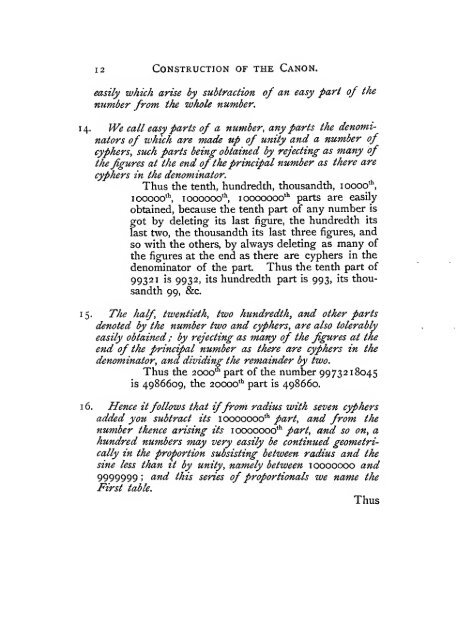
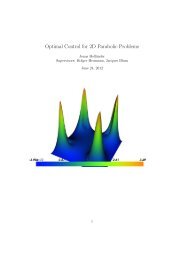
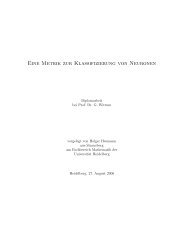
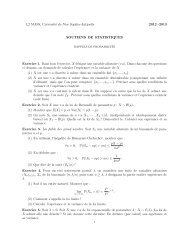
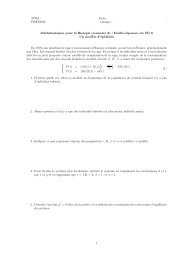


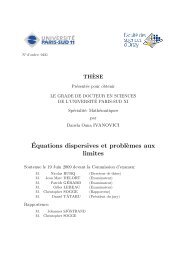
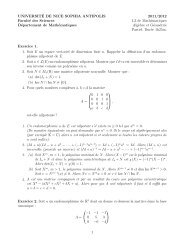
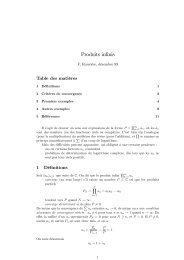
!['eries enti\`eres (+ [D78 Th d'Abel angulaire])](https://img.yumpu.com/14067031/1/184x260/eries-entieres-d78-th-dabel-angulaire.jpg?quality=85)
